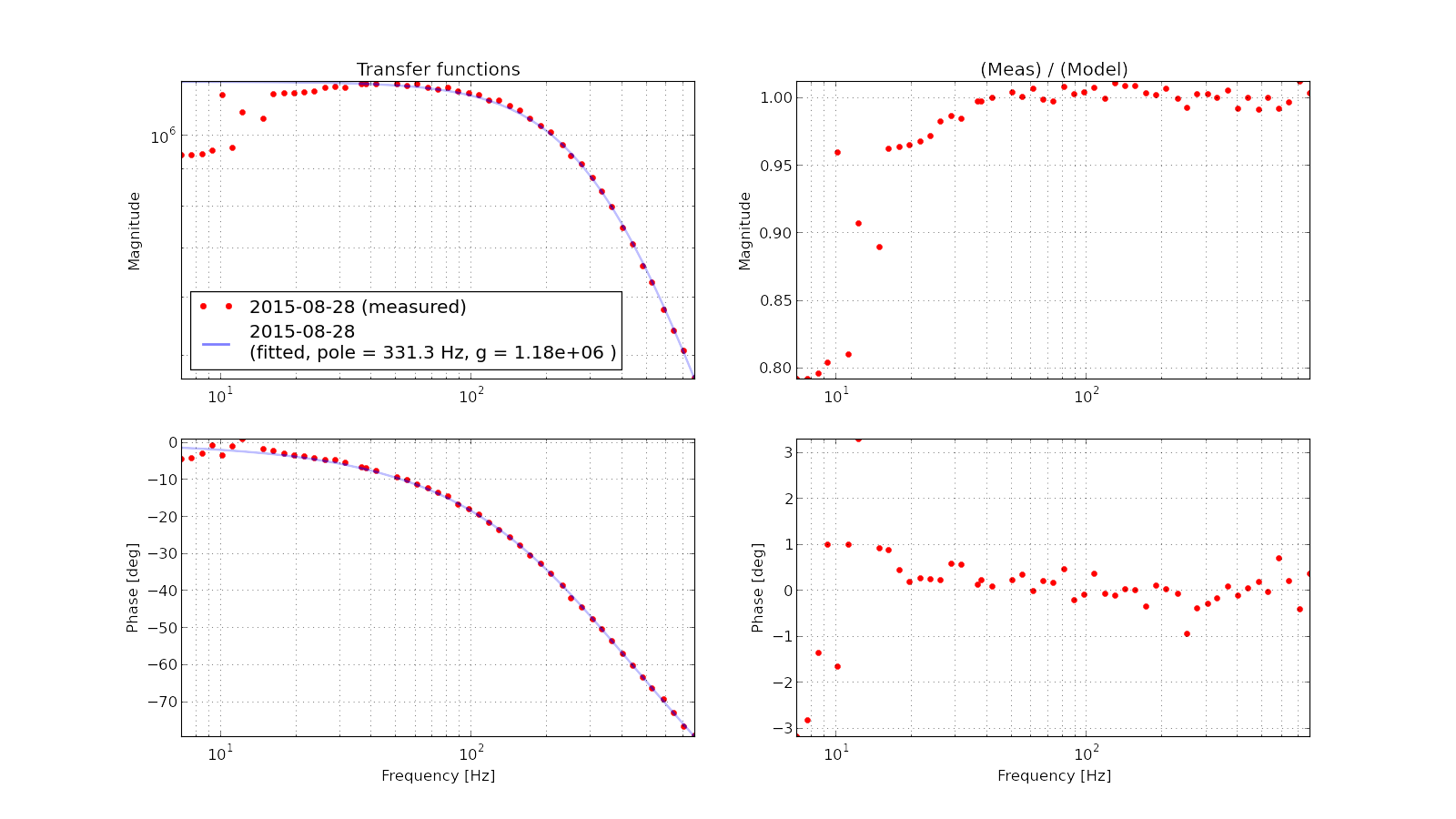Dan, Evan
This evening we made a qualitative study of the coupling of beam jitter before the IMC into DARM. This is going to need more attention, but it looks like the quiescent noise level may be as high as 10% of the DARM noise floor around 200Hz. While we don't yet understand the coupling mechanism, this might explain some of the excess noise between 100-200Hz in the latest noise budget.
We drove IMC-PZT with white noise in pitch, and then yaw. The amplitude was chosen to raise the broadband noise measured by IMC-WFS_A_I_{PIT,YAW} to approximately 10x the quiescent noise floor. This isn't a pure out-of-loop sensor, and since we were driving the control point of the DOF3 and DOF5 loops of the IMC alignment channels we will need to work out the loop suppression to get an idea of how much input beam motion was being generated. Unfortunately we don't have a true out-of-loop sensor of alignment before the IMC. We may try this test again with the loops off, or the gain reduced, or calibrate the motion using the IMC WFS dc channels with the IMC unlocked. Recall that Keita has commissioned the DOF5 YAW loop to suppress the intensity noise around 300Hz.
The two attached plots show the coherence between the excitation channel (PIT or YAW) and various interferometer channels. The coupling from YAW is much worse: at 200Hz, an excitation 10x larger than normal noise (we think) generates coherence around 0.6, so the quiescent level could generate a few percent of the DARM noise. Looking at these plots has us pretty stumped. How does input beam jitter couple into DARM? If it's jitter --> intensity noise, why isn't it coherent with something like REFL_A_LF or POP_A_LF (not shown, but zero)?
The third plot is a comparison of various channels with the excitation on (red) and off (blue). Note the DCPD sum in the upper right corner. Will have to think more about this after getting some slpee.
Transfer function please.
TFs of the yaw measurement attached.
If the WFS A error signal accurately represents the quiescent yaw jitter into the IMC, the orange TF suggests that this jitter contributes the DCPD sum at a level of 3×10−8 mA/Hz1/2 at 100 Hz, which is about a factor of 6 below the total noise.
Using this measured WFS A yaw → DCPD sum TF, I projected the noise from WFS A onto the DARM spectrum (using data from 2015-08-27). Since the coupling TF was taken during a completely different lock stretch than the noises, this should be taken with a grain of salt. However, it gives us an idea of how significant the jitter is above 100 Hz. (Pitch has not yet been included.)
PIT coupling per beam rotation angle is a factor of 7.5 smaller than YAW:
https://alog.ligo-wa.caltech.edu/aLOG/index.php?callRep=21212
Re: "How does beam jitter couple to DARM?" : jitter can couple to DARM via misalignments of core optics (see https://www.osapublishing.org/ao/abstract.cfm?uri=ao-37-28-6734).
If this is the dominant coupling mechanism, you should see some coherence between a DARM BLRMS channel where this jitter noise is the dominant noise (you may need to drive jitter with white noise for this) and some of the main IFO WFS channels.
The BLRMS in the input beam jitter region (300-400 Hz) is remarkably stable over each lock (see my entry here), so there seems to be no clear correlation with residual motion of any IFO angular control.
Thanks for the link to that post, I hadn't seen it. It may still be possible though that there's some alignment offset in the main IFO that couples the jitter to DARM (i.e. a DC offset that is large compared to residual motion – perhaps caused by mode mismatch + miscentering on a WFS). This could be checked by putting offsets on WFS channels and seeing how the coupling changes.























